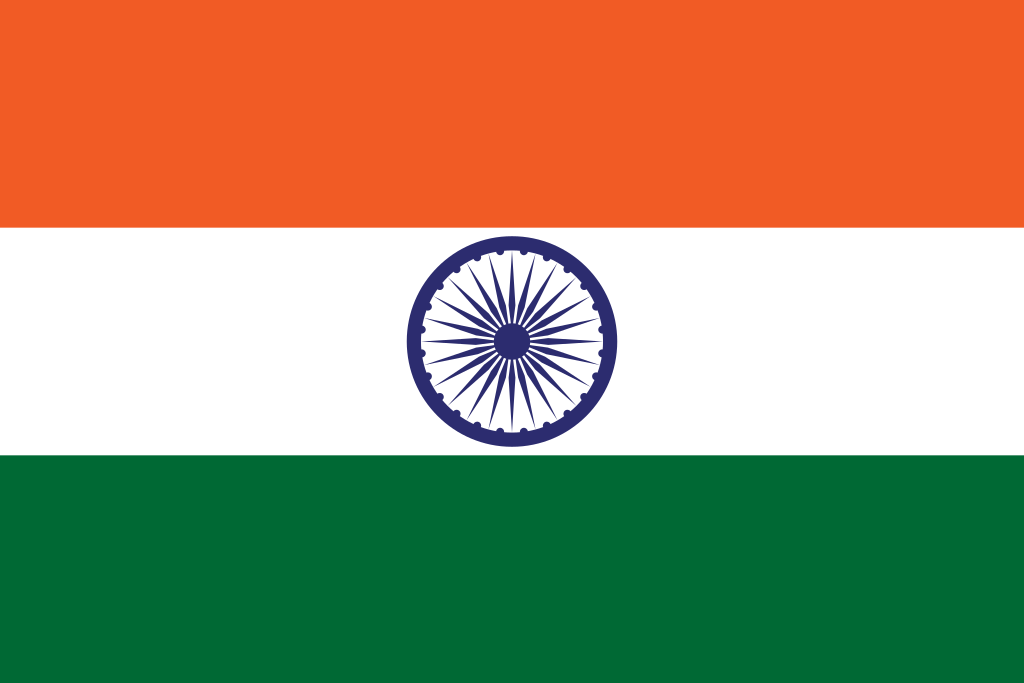The concept of a national flag for India was initially introduced by Pingali Venkayya, a dedicated freedom fighter, in 1921. The design underwent gradual refinements, culminating in the iconic tricolor that was unanimously embraced as India inched closer to independence in 1947.
Symbolism:Saffron (Kesariya):
Saffron, adorning the uppermost stripe of the flag, encapsulates a spectrum of the nation's ethos:
ourage and Sacrifice: Saffron resonates with the valorous spirit of the Indian populace, embodying their readiness to make profound sacrifices for the advancement of the nation. This hue serves as a poignant tribute to the countless individuals who laid down their lives during the arduous struggle for India's liberation.
Renunciation: Saffron further encapsulates the noble essence of renunciation, a steadfast commitment to selflessness and unwavering dedication to serving the nation.
White (Safed):The middle segment, painted in white, is imbued with layers of symbolism that mirror India's intrinsic values:
Purity and Peace: White stands as an emblem of purity, tranquility, and veracity. It reverberates with the principles of truth and non-violence, epitomized by Mahatma Gandhi's philosophy of satyagraha—a cornerstone of the struggle for independence.
Unity: Symbolizing unity in diversity, the white stripe serves as a binding force, seamlessly weaving together India's multifaceted cultures, religions, and languages into a harmonious and unified nation.
Green (Hara):The lowermost green stripe carries profound connotations that are deeply intertwined with India's essence:
Fertility and Growth: Green, a vibrant hue representing fertility and growth, celebrates the country's fertile landscapes, abundant natural resources, and the burgeoning evolution of Indian society and economy.
Auspiciousness: Green is also a harbinger of auspiciousness, intimately linked with India's agrarian heritage and the auspicious blessings showered upon the land.
Ashoka Chakra:At the heart of the flag lies the Ashoka Chakra, a pivotal emblem endowed with historical and philosophical underpinnings:
Historical Allusion: Derived from the ancient Lion Capital of Ashoka—an artifact from the Mauryan era, presently the national emblem of India—the Ashoka Chakra symbolizes the governance of Ashoka, characterized by ethical and moral principles.
Virtuous Tenets: The 24 spokes of the Ashoka Chakra depict the "Dharma Wheel," representing the teachings of Buddha and the virtues integral to a righteous and harmonious society. Virtues such as love, courage, patience, and honesty converge within these spokes, shaping the nation's moral fabric.
Dynamic Progress: The Ashoka Chakra's rotational motion signifies the ceaseless dynamism of life, mirroring the perpetual cycle of change and underscoring the nation's onward march toward progress.
Flag Usage and Protocol:The Indian flag commands the utmost reverence and adheres to a stringent code of conduct:
Hoisting and Lowering: The flag is unfurled at sunrise and gradually lowered at sunset. This ceremonial practice demands a brisk hoisting and a deliberate and solemn lowering.
Half-Mast Tribute: During periods of national mourning, the flag is respectfully flown at half-mast as a poignant tribute to collective grief.
Private Display: While citizens are at liberty to exhibit the flag in their homes, vehicles, and personal spaces, it is paramount that such displays are executed with unwavering respect and strict adherence to guidelines.
In essence, the Indian flag stands as an embodiment of India's opulent heritage, its relentless pursuit of independence, its resolute dedication to truth and non-violence, its harmonious embrace of diversity, and its aspirations for an equitable and flourishing society. It is an emblem that kindles patriotic fervor, fosters unity, and encapsulates the ceaseless voyage of the Indian nation.
Last Updated on: November 13, 2025
